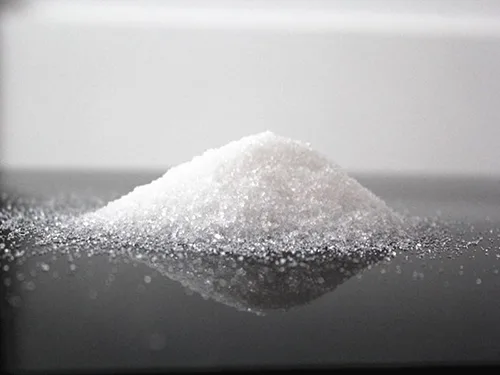As the leading magnesium oxide manufacturer, we are proud to offer high-purity, performance-driven MgO products that support innovation in advanced energy storage systems. With the surge of interest in next-generation batteries, magnesium oxide (MgO) has emerged as a multifunctional material with promising roles in improving battery safety, performance, and longevity.
In this article, we explore the applications and benefits of magnesium oxide in various battery technologies, including lithium-ion, solid-state, high-temperature, and emerging systems like magnesium and sodium-ion batteries. Whether you are a researcher or an engineer in the battery industry, this guide will help you understand how MgO can meet your technical and performance needs.
Characteristics of Magnesium Oxide
Magnesium oxide is a versatile inorganic compound known for its:
- High melting point (~2852°C)
- Exceptional chemical stability
- Excellent thermal insulation
- Low reactivity under battery operating conditions
These characteristics make MgO a valuable functional material in the design and optimization of energy storage devices. While not typically a core active battery material like lithium or cobalt, MgO serves as a strategic additive, dopant, or coating that addresses key challenges in battery engineering—especially thermal management, chemical degradation, and ion conductivity.
Applications of Magnesium Oxide in Batteries
Electrode Material Coatings or Additives
Magnesium oxide can be used as a coating on cathode materials (e.g., LiCoO₂, NMC) in lithium-ion batteries. This protective layer:
- Inhibits side reactions between the electrolyte and electrode surface
- Reduces electrolyte decomposition, especially at high voltage
- Prevents transition metal dissolution (such as cobalt or manganese ions) into the electrolyte
MgO nanoparticles are also explored as additives in composite electrodes, where they help:
- Improve the mechanical stability of the electrode
- Enhance compatibility between different active materials
- Reduce internal resistance over long-term use
Solid Electrolyte Additives
In solid-state batteries, magnesium oxide is used as a dopant or dispersing agent in solid electrolyte matrices (e.g., sulfide or oxide-based electrolytes). Benefits include:
- Improved ionic conductivity through optimized grain boundary formation
- Better mechanical integrity to prevent cracking or dendrite penetration
- Enhanced compatibility with both lithium and sodium-ion systems
High Temperature Battery Applications
Due to its excellent thermal stability and insulation, magnesium oxide is an ideal material for high-temperature batteries used in:
- Industrial backup systems
- Aerospace and defense
- Deep well drilling electronics
In such conditions, MgO is used as a thermal barrier, ceramic separator, or structural component in battery housings. Its resistance to phase transformation and chemical corrosion ensures reliable performance in environments exceeding 300°C.
Potential Applications of Magnesium Batteries
As research advances into magnesium-ion batteries (MIBs)—a promising alternative to lithium-ion batteries—MgO plays potential roles in:
- Electrolyte stabilization
- Cathode doping for better electron transfer
- Interfacial coating to reduce magnesium dendrite growth
Although MgO is not a direct active component in MIBs yet, its ability to stabilize interfaces and inhibit passivation makes it a key candidate for supporting materials.
Other New Battery Systems
Magnesium oxide is also being investigated in:
- Sodium-ion batteries, to stabilize the cathode/electrolyte interface
- Zinc-air batteries, where MgO coatings improve electrode corrosion resistance
- Lithium-sulfur batteries, where MgO nanostructures suppress polysulfide migration
As composite and hybrid battery designs evolve, MgO’s compatibility with multiple chemistries positions it as a multifunctional enhancer across the board.
Advantages and Benefits of Magnesium Oxide
Improved Thermal Stability
Thanks to its high melting point and heat resistance, MgO helps:
- Prevent thermal runaway in lithium-ion batteries
- Maintain electrode structure at elevated temperatures
- Improve thermal diffusion in densely packed battery cells
Mechanism: MgO serves as a thermal insulator and flame retardant, delaying heat transfer during failure events, especially in EV and grid-scale batteries.
Extended Cycle Life
By reducing side reactions and metal dissolution, MgO coatings or additives:
- Protect electrode surfaces
- Reduce gas generation
- Lower capacity fade over long-term cycling
Enhanced Safety
Safety improvements include:
- Inhibiting dendrite formation (especially in Li and Mg batteries)
- Minimizing gas release from electrolyte decomposition
- Thermal buffering during overheating
These functions make MgO an ideal component for consumer electronics, electric vehicles, and aerospace batteries where failure is not an option.
Cost and Resources
Magnesium oxide offers supply chain and cost advantages:
- Abundant and widely available raw materials
- Lower production cost than rare metals or specialty ceramics
- Easily scalable for industrial applications
With rising concerns over lithium and cobalt pricing, MgO provides a sustainable auxiliary material to help manage total battery production costs.
Environmental Friendliness
Compared to some complex oxides and synthetic additives, MgO is:
- Non-toxic
- Environmentally inert
- Easily recyclable in ceramic or metallurgical processes
This makes it especially appealing for manufacturers focused on green chemistry and circular economy principles.
Conclusion
Magnesium oxide is a technically and environmentally valuable material in the evolution of battery technologies. From stabilizing cathodes in lithium-ion cells to enhancing the thermal performance of high-temperature batteries and supporting the development of magnesium and sodium-ion systems, MgO is proving to be much more than just a passive insulator.
As the world’s leading magnesium oxide supplier, we are committed to supporting innovation in clean energy, battery R&D, and next-generation energy storage materials. Our custom MgO solutions are tailored for high-performance, safety-critical applications.
Interested in learning more? Contact Meishen today to speak with our technical specialists or request a sample.
FAQs
Can magnesium oxide be used in lithium-ion battery anodes?
While MgO is not typically an active material in anodes, it can be used as a structural additive or interface layer to improve thermal stability and prevent degradation.
Is magnesium oxide electrically conductive?
No, MgO is an electrical insulator, which may limit its use in active charge transport pathways. However, this drawback can be mitigated by using nanoscale MgO or incorporating it into composite materials with conductive additives.
What particle size of MgO is best for battery applications?
Nano- and submicron-sized MgO (typically <100 nm) is preferred for coating or doping purposes, as it offers better surface area, dispersion, and interfacial interaction.


